If you’re looking for a trail with relatively flat terrain for walking, horseback-riding, or cycling, which offers a high chance of seeing wildlife along its creek or emerging from the hills, San Timoteo Nature Sanctuary might be your place. This undiscovered place in Redlands CA also offers a lot of solitude.
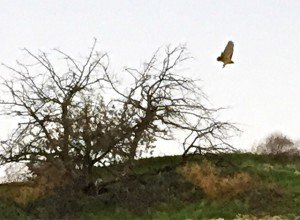
The primary trail is four miles and starts off of Allesandro Road in Redlands and ends at the San Timeteo Canyon Road. I’ve hiked and biked this area a number of times, usually at the end of the day, when the lighting and wildlife sighting is great.
What I like:
Cool history (especially the early part): As you hike the trail along the San Timoteo Creek, recall that for many centuries American Indians used to travel along an ancient trail referred to as the Cocomaricopa Trail in this same area. Most of the primary trail follows the century-old Carriage Trail built in the mid 1800s by the Redlands’ Smiley Brothers (who are responsible for much of what Redlands looks like today) to take their guests into the canyon for excursions.
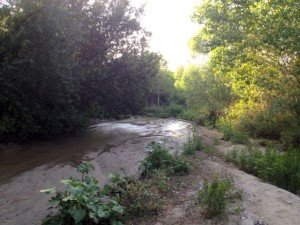
In the mid-1900s, significant floods prompted the U.S. Army Corp of Engineers to remove vegetation along a large portion of the San Timeteo Creek and develop sediment basins as part of the Seven Oaks Dam project to manage flow waters and protect Orange County. In 2008, the City of Redlands began to preserve the property. They started with approximately 50 acres in the canyon and existing properties as a match for EPA funds. Today the total property is 200 acres, all managed by the Redlands Conservancy, 40 of which are at the east end of Creekside Drive.
We are lucky to have this area preserved.
Wildlife sightings: With a wildlife corridor linking the canyons to the riparian area, you’re likely to see wildlife, especially early in the morning or at dusk. Aside from rich bird life ranging from raptors to songbirds, I’ve seen coyotes, fox and a roadrunner. A cyclist on the trail said he often sees a half-dozen deer in the first canyon and a bobcat during his early morning rides.
Here’s a more recent post on bird-watching at San Timoteo.

Native Brittlebush in lower right – but most of this area has type-converted from frequent wildfires and old land practices Good example of the wildlife differences between native and non-native vegetation: Wildlife is obvious where the willows and sycamore trees along the creek exist, and the buckwheat, sage and elderberry of the chaparral and sage scrub community predominate. A variety of birds flitter and chatter as they harvest the insects and seeds on the plants, and use its cover. Lizards and bug life are common on the trail. But because the canyons have burned too often from mostly human-caused wildfires, and also due to over-grazing and dry-land farming on the flat areas, many parts have undergone type-conversion. Non-native plants like cheat grass and tumblegrass (Russian thistle) have taken root, and in those areas there’s silence. There’s still beauty but it’s very quiet. The Redlands Conservancy has on-going projects to restore the native habitat.
How to reach: The sanctuary is on the west side of Alessandro Road (across from a large subdivision on the east side) south of Sunset Drive, and north of San Timoteo Canyon Road. Park between the road and the sanctuary fence on the dirt area and enter through the gate. Please note the County Flood Control District prohibits use of the flood control access road at San Timoteo Canyon Road. Sherli Leonard, Redlands Conservancy’s executive director, welcomes trail users, and asks that they stay on trails, and honor the yield protocol – hikers and cyclists to horses, cyclists to everyone else.
For more info: The Redlands Conservancy’s Restoration Project for San Timoteo
EPA Environmental Assessment (2007) offers a good summary of the vegetation, wildlife and habitat value
More on type-conversion from frequent wildfires (Chaparral Institute) and LA Times article
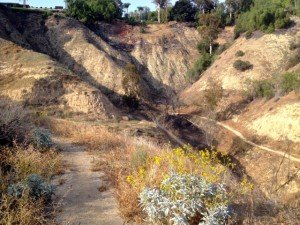
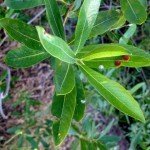
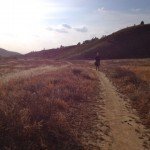
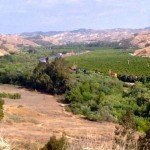
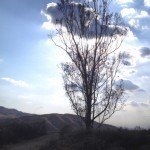
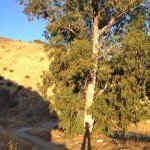
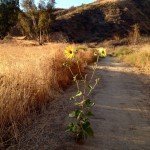
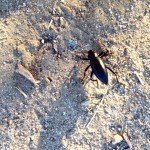
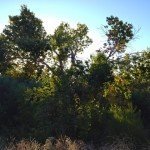
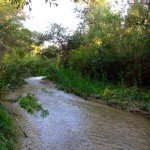
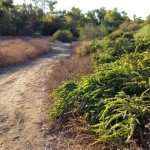
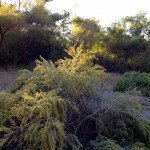

I went to jr high and high school in Redlands (grad 1960) and remember walks in Smiley Heights.
Is there anything left of the road there and the terraces of orange groves, or is it all developed?
We lived on Sonora between Clark and Fern, and Fern was the bicycle route to adventure.
I enjoyed your ph0tos and very glad there is some land conservation going on in San Timoteo.
Smiley Heights is all developed now, but the city is doing a pretty good job of saving some of the orange groves in different parts of the city. Yes for continued land conservation!
My husband and I lived in the canyon for 10 years from 1990 to 2000. Recently we took a ride to where we used to live, the address was 29800, we had a mobile home across from where people used to go shooting. We walked down from the road to see the creek and how much it has probably changed. It has definitely changed, there was absolutely NO WATER in a place that had running water all year round. It was heartbreaking. Where did the water go?